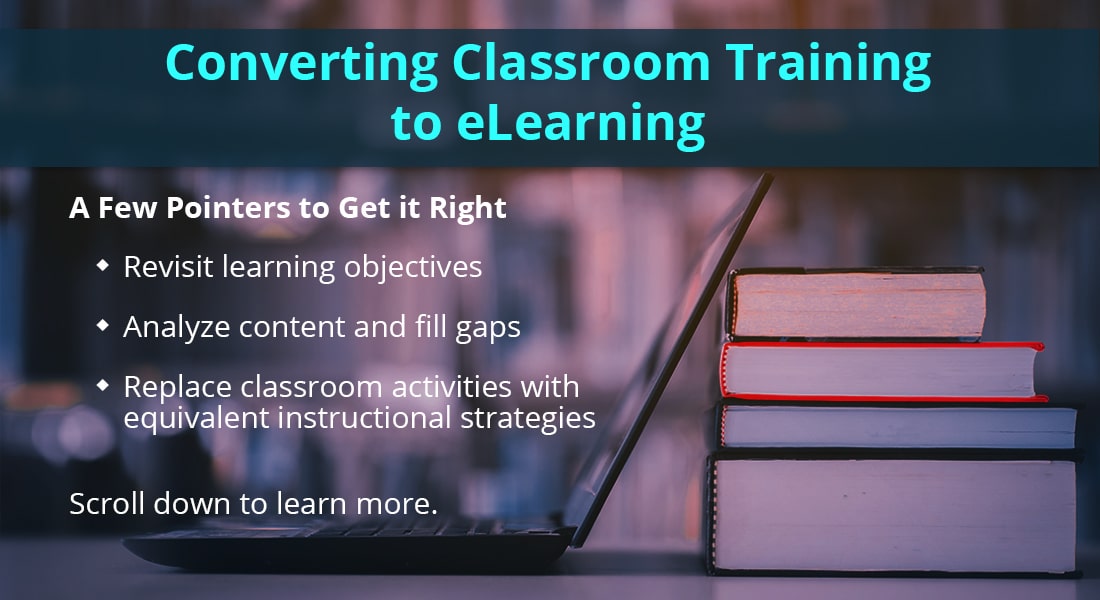Where and Why Does Classroom Training Fail?

Classroom training is the first thing that comes to the mind of training managers every time employees need to be trained. This is often touted as the ideal solution to upskill employees. Despite the fact that new training methodologies such as online learning, virtual instructor-led training, or webinars have entered the corporate learning landscape, classroom training is still the choice because it is effective in knowledge transfer and has been a time tested and successful method. All you need is a trainer and an audience. But very few training managers contemplate whether this type of training is suited to meet the demands of a changing business world.
Even if classroom training can provide insights and instructions to employees to do their jobs better, the trainer or instructor talks to the learners, while giving them limited opportunities to interact and ask questions. The information delivered is rarely reinforced. As a result, learners are bound to forget this information. Let us look at a few more reasons classroom training may not meet all the training demands of today’s business landscape.
One Way Traffic of Information
Traditional classroom training is usually the trainer talking to their audience with negligible interaction, except for a question and answer session at the end. The focus is on a pre-defined curriculum rather than employee learning. In such a session, the trainer has the control; he dispenses knowledge which the audience is expected to listen.
Little Time for Interaction
Learners thrive in a fun and engaging environment and engage in dynamic and creative training sessions. People hate to be confined to their chairs and prefer to move around, share ideas and interact with others in the group. Unfortunately, today’s classroom training sessions are met with a ‘get it over and done with’ attitude where trainees from different locations are eager to finish their training and are catching up with their work during any downtime they get, rather than interact with others.
Classroom training or ILT focuses on employees completing their work, based on individual effort and gives few opportunities for collaboration and teamwork. When employees get back to work, very few are aware of how to put their newly acquired knowledge to practice. They might even not be aware of whom to contact in case of doubts. They just have their notes to refer to and lack the knowledge that comes with sharing ideas or collaborating with others.
Adult Learning Principles are on the Backburner
Adult learners like to have a say in what they are learning and how they are learning. They would like to have a sense of responsibility, control, and decision-making in what they are learning. Unfortunately classroom training does not provide such opportunities. The content is already decided and it is very rare to ask learners about their views on the content. As a result, participants fail to see how the training is going to help them.
Classroom training provides little room for the adult desire to learn by exploration. In these sessions, learners are rarely encouraged to explore the right methods or techniques needed to find answers or solutions to problems. They are just asked to accept what is delivered to them. This fails to teach them the expertise they need to excel in their work.
Different Learning Styles are Ignored
Classroom training usually follows a one-size-fits all approach, where the material is delivered to learners without considering their learning styles. Training should ideally be a mix of methods that suit visual, auditory, or kinesthetic learners. This is rarely the case because the trainer will use methods most comfortable to them.
The flipside to this is the training may not make the required impact on learners and it may fail to provide a complete learning experience.
Another aspect of classroom training is that it may not appeal to all learners, especially if the audience belongs to multiple generations. It is very rare for a classroom training session to be designed based on the understanding of each generation, varied approaches for different generations, and meeting their expectations.
Disconnect between Training Objectives and Training Methods
Classroom training does not contain methods that can bring a change in behavior or skills because this lecture style method of teaching is best suited for only transferring knowledge. Behavioral change requires experiential learning which cannot be provided in the classroom.
Sometimes there is no clear thought put into what training is required and classroom training is planned without considering the training objectives.
The above factors can be detrimental to the success of classroom training and lead to waste of training funds. Training managers need to think beyond classroom training and think of blended learning strategies to reach their training goals. Do you agree? Share your thoughts.





